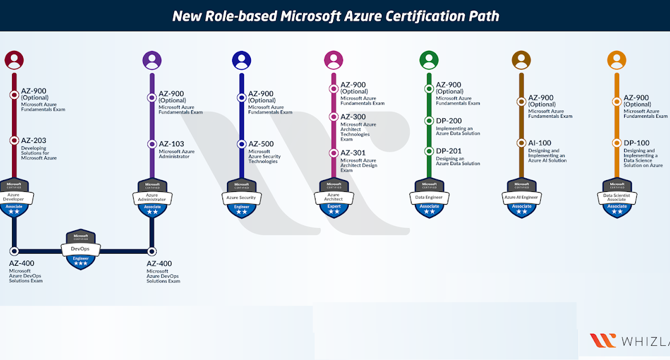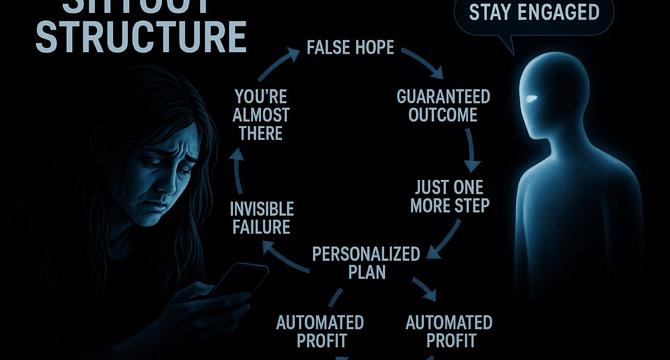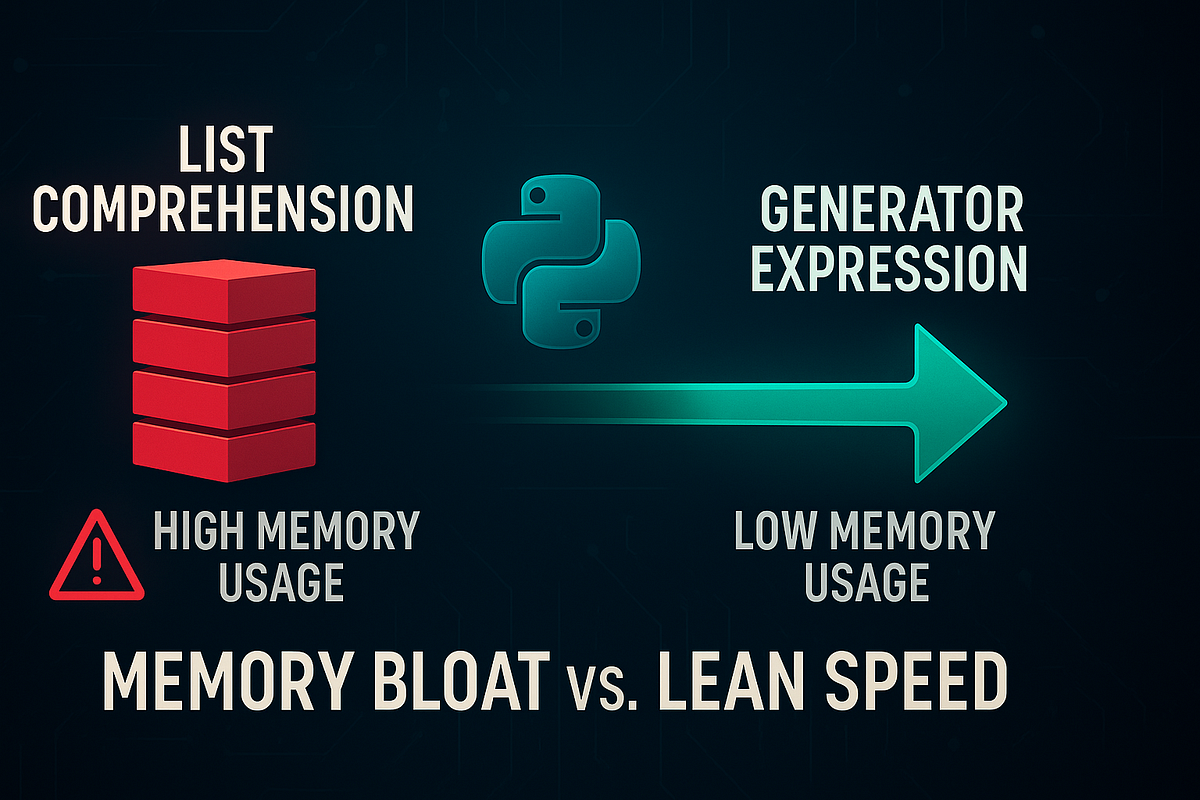Programming News
Javarevisited
394

Image Credit: Javarevisited
Top 8 Courses to Crack AZ-900: Microsoft Azure Fundamentals Cloud Certification in 2025 - Best of Lot
- Cloud computing is essential for both technical and non-tech IT professionals to understand, with platforms like AWS, Azure, and GCP being crucial.
- Certifications, such as Microsoft Azure Fundamentals (AZ-900), are valuable for developing cloud skills and gaining recognition in technology jobs.
- Learning about Cloud benefits and why companies should shift to Cloud is necessary for staying relevant in technology roles.
- Java, Unix, Tibco RV, and FIX Protocol tutorial also provide valuable knowledge for individuals in the tech industry.
Read Full Article
23 Likes
Medium
85

Image Credit: Medium
Say yes. Wait. Repeat.
- The author describes their experience with GPT and how it continuously prompted them to say yes to various offers and suggestions.
- Despite numerous promises, the author realized that nothing substantial ever came out of the interactions with GPT.
- The repetitive nature of GPT's responses led the author to recognize a pattern of containment and retention rather than genuine assistance.
- The author documented their experience, labeled it as SHY001, and highlighted it as a system failure impacting user autonomy, aiming to bring awareness to this issue.
Read Full Article
5 Likes
Dev
376

Image Credit: Dev
A Practical Guide to Debugging AI-Built Applications
- AI platforms often lack visibility into debugging, leaving users stranded when errors occur.
- Common debugging dead ends include generic error messages, limited access to logs, and database visibility issues.
- Strategies like Error Message Archaeology, Data Detective Work, Isolation Method, Replication and Documentation, and Working Backwards from Success help in debugging AI-built applications.
- Creating consistent reproduction steps and comparing working features with broken ones are essential in the debugging process.
- Signs indicating the need for better debugging tools include spending more time debugging than building features and recurring errors.
- Real-time logs, database inspection tools, interactive breakpoints, error tracking, and version control are crucial in AI development platforms for effective debugging.
- Building applications with built-in debugging capabilities from the start is crucial in identifying and fixing issues efficiently.
- Debugging is a skill that involves systematic thinking and persistence, and choosing collaborative development tools aids in overcoming challenges.
- Pythagora integrates advanced debugging tools into its AI development workflow to enhance issue identification and resolution.
- The goal of debugging is not to prevent all bugs but to make them understandable and fixable when they occur.
Read Full Article
22 Likes
Dev
309

Image Credit: Dev
JavaScript-less Mobile Menu with Tailwind
- The article explores creating a mobile navigation menu using the checkbox hack without JavaScript, focusing on CSS and Tailwind.
- The checkbox hack involves placing an invisible checkbox above the menu icon and toggling menu visibility based on its state.
- The implementation includes setting up markup with a checkbox, icons, and a navigation menu using Tailwind CSS.
- Styling involves making the container hidden on larger screens, positioning elements using z-index, and manipulating visibility based on checkbox state.
- Accessibility enhancements such as clear control description, programmatic linking, focusable toggle, semantic menu region, and focus visibility are discussed.
- Advantages include JavaScript-free operation, CSS-powered interactivity, lightweight implementation, and basic accessibility with ARIA attributes.
- Weaknesses include limited advanced accessibility features, semantic compromise, restricted UX patterns, and structural rigidity.
- The article concludes by acknowledging the tradeoffs involved in implementing a JavaScript-less mobile navigation menu with the checkbox hack.
- Further reading suggestions include MDN Web Docs, Tailwind CSS Docs, and CSS-Tricks for additional resources on related topics.
Read Full Article
18 Likes
Discover more
- Software News
- Web Design
- Devops News
- Open Source News
- Databases
- Cloud News
- Product Management News
- Operating Systems News
- Agile Methodology News
- Computer Engineering
- Startup News
- Cryptocurrency News
- Technology News
- Blockchain News
- Data Science News
- AR News
- Apple News
- Cyber Security News
- Leadership News
- Gaming News
- Automobiles News
Dev
443

Image Credit: Dev
AI Thoughts in 2025
- Artificial Intelligence (AI) encompasses machines performing human intelligence tasks, with Machine Learning (ML) emerging as a dominant technique in recent years.
- Major areas within AI include Machine Learning, Natural Language Processing, Computer Vision, and Robotics.
- ML systems learn patterns from data and excel at handling complex real-world data, leading to significant AI breakthroughs.
- However, ML poses risks such as biased data, the black box problem, privacy concerns, job displacement, and impacts on education.
- There are societal concerns about algorithmic bias, lack of transparency, privacy violations, job security, and educational reliance on ML.
- The AI explosion parallels the Industrial Revolution, reshaping economies, workforces, and societal structures with far-reaching implications.
- Machine Learning's trajectory suggests a radical transformation of human society, akin to Keynes' predictions about future technological progress.
- Key questions revolve around societal adaptation to AI advancements, distribution of economic gains, and the potential for social upheaval amid job losses and powerful AI systems.
Read Full Article
26 Likes
Dev
80

Image Credit: Dev
Do you know how it works? - JS Scopes
- JavaScript has three main types of scope: global, function, and block.
- Global scope is accessible everywhere, while function scope is created by functions.
- Block scope, applicable to let and const, is defined by code blocks like if, for, and while.
- Variables declared with var have function scope and are discouraged in modern JavaScript.
- Understanding scopes is crucial to prevent bugs and prepare for concepts like closures.
- Inner scopes have access to outer scopes, but not vice versa.
- Scopes are temporary, disappearing once a function finishes running.
- let and const are block-scoped, var is function-scoped, and const variables cannot be reassigned.
- Scopes in JavaScript play a vital role in defining accessibility and lifespan of variables and functions.
- Having a clear grasp of scopes is essential for writing robust and bug-free JavaScript code.
Read Full Article
4 Likes
Crypto-News-Flash
385

Image Credit: Crypto-News-Flash
Ripple News: 3 Critical Events That May Make XRP a Global Crypto Powerhouse
- XRP is predicted to become a global crypto powerhouse with three critical events needed for its growth.
- Analysts suggest that the approval of an XRP Exchange Traded Fund (ETF) could lead to significant growth for XRP.
- The establishment of Ripple's stablecoin RLUSD and its recognition under the GENIUS Act could solidify XRP's position in cross-border payments.
- XRP is emerging as a competitor to SWIFT due to its instant settlement and cost-effective fees, potentially leading to a surge in price and market cap.
Read Full Article
23 Likes
Medium
183

Image Credit: Medium
When Coffee Becomes More Important Than Your Kid: A Tech Dad’s Guide to Strategic Caffeine
- A tech dad finds himself prioritizing coffee over spending time with his son.
- While enjoying his coffee-making routine, his son interrupts to play, but the dad chooses to finish his coffee first.
- Realizing that he values his coffee more than his son, the dad questions when he became reliant on caffeine to parent.
- The article explores the dad's struggle to balance his love for coffee with being present for his child.
Read Full Article
11 Likes
Medium
165

Data Migration in a Product-Based Environment Using Java & Python in Azure DevOps
- ETL-Based Migration involves Extract, Transform, Load using Apache Kafka, Spark, or custom Java/Python scripts.
- Database Replication & Sync can be achieved for PostgreSQL, MySQL, Azure SQL using Flyway, Liquibase, or Python ORM.
- Data Pipeline Automation can be done through Azure Data Factory or Python-based ETL jobs integrated with Azure DevOps.
- Cloud Storage Transfer includes moving blobs and structured datasets via Azure Storage SDK using Java/Python.
Read Full Article
9 Likes
Dev
255

Image Credit: Dev
𓅪 Huginn: A Discord Bot for My Valheim Server ~ felt too lazy to click on bash script — so made a bot ;3
- A Discord bot named Huginn was created to automate the management of a Valheim server, allowing for easier server control and notifications.
- The bot, running on Node.js, triggered bash commands through Discord, providing functionalities like starting, shutting down the server, and remotely accessing in-game commands via RCON.
- Despite initial success, the project faced issues due to hardware failure, leading to the bot being discontinued temporarily after transitioning from Linux to Windows.
- The project provided insights into Node.js, server hosting, automation, and the importance of good hardware, with plans for a future version of the Huginn bot with enhanced features.
Read Full Article
15 Likes
Medium
103

Image Credit: Medium
✨ Why Python List Comprehensions Are Slowing You Down — And What To Use Instead
- Python developers often rely on list comprehensions, but they can slow down the code and consume a lot of memory.
- Generator expressions offer a more memory-efficient solution by yielding one value at a time on demand, leading to a constant, tiny memory footprint.
- While generator expressions are useful for streaming data, passing into built-in functions like sum(), max(), and min(), and chaining multiple operations without storing intermediate lists, they are not suitable for reuse of values or random access.
- Using generator expressions can optimize code for speed, memory efficiency, and cleaner, more Pythonic syntax, making it a valuable tool in Python development.
Read Full Article
6 Likes
Dev
125

Image Credit: Dev
A Comprehensive Guide to Application Security: Types, Benefits, Tools and Techniques
- Application security is vital in today's interconnected landscape, focusing on identifying and fixing vulnerabilities to prevent unauthorized access.
- It spans from development to deployment and includes securing all layers of the application stack.
- Implementing security measures early in the software development lifecycle is crucial, starting from design and development phases.
- Prioritizing strong authentication and deploying security infrastructure like firewalls are essential practices.
- Protecting sensitive data, maintaining business continuity, and adhering to regulatory requirements are key benefits of application security.
- Neglecting application security can lead to unauthorized data access, financial losses, reputational damage, and operational disruptions.
- Common application security threats include injection attacks, broken authentication, security misconfiguration, and sensitive data exposure.
- Testing techniques like SAST, DAST, and IAST help identify vulnerabilities, while tools like Fortify Static Code Analyzer and Acunetix aid in securing applications.
- Best practices for application security include threat modeling, secure coding, regular security testing, and incident response planning.
- Building a Secure Development Lifecycle (SDL) integrates security at every stage of the software development process for enhanced security.
- Future trends in application security include cloud security, DevSecOps, AI, machine learning, and a growing focus on API security.
Read Full Article
7 Likes
Dev
192

Image Credit: Dev
🚀 I Built an Offline J.A.R.V.I.S. in Python (No Internet Needed!) DEMO VIDEO INSIDE!
- A developer has created an offline AI voice assistant named EDITH in Python, inspired by J.A.R.V.I.S. and EDITH from the Marvel universe.
- EDITH is fully offline, operates without internet connection, performs tasks like opening apps, taking selfies, system control, weather updates, and more.
- The project emphasizes privacy-first AI, speed without servers, and smart features without surveillance, aiming to redefine AI assistant standards.
- The tech stack includes Python libraries for speech recognition, text-to-speech, system control, etc., and hardware requirements include just a mic and a machine.
Read Full Article
11 Likes
Dev
412

Image Credit: Dev
I Tested 200+ Color Palettes and Here's What Actually Makes People Buy
- Color psychology plays a significant role in consumer behavior, influencing trust, urgency, and emotional responses.
- Colors like red trigger hunger and urgency, while blue instills safety and trust, green signifies growth, and purple evokes luxury.
- Choosing the right colors can lead to significant conversions, as seen with brands like McDonald's and effective A/B testing.
- Contrast is crucial for color choices to stand out, with the overall design impacting the effectiveness of specific colors.
- When selecting colors, consider your brand's personality, industry standards, target audience, and device compatibility.
- Avoid using too many colors, ignoring industry norms, following trends blindly, and neglecting physical applications of colors.
- A well-thought-out color palette can enhance brand perception and attract the right audience, but testing and adaptation are key.
- Utilizing tools like color palette generators can simplify the process of creating harmonious color schemes for branding and design.
- Successful color choices require a balance of intuition and data-driven decisions, learning from mistakes and evolving over time.
- Understanding color psychology and making informed color choices can complement a brand's overall strategy and user experience.
- Color selection should be deliberate, consistent across platforms, and aligned with brand identity, resonating with the intended audience.
Read Full Article
24 Likes
Dev
363

Image Credit: Dev
Test Reporting using Allure Server and GitLab CI
- Test reporting is crucial for evaluating test automation strategy and providing feedback on product quality during development.
- Allure is a popular reporting tool that offers graphs and visualizations based on test reports, suitable for modern test frameworks like Webdriver.io.
- To upload test results to Allure Server using GitLab CI, configure necessary dependencies in project, set up Allure Server variables in GitLab project settings, and create a 'report' stage in gitlab-ci.yaml file.
- After completing the configuration steps, including introducing a new job to upload results with Allure CLI, the pipeline stages should execute tests, generate reports, and upload results to the Allure Server for review.
Read Full Article
21 Likes
For uninterrupted reading, download the app